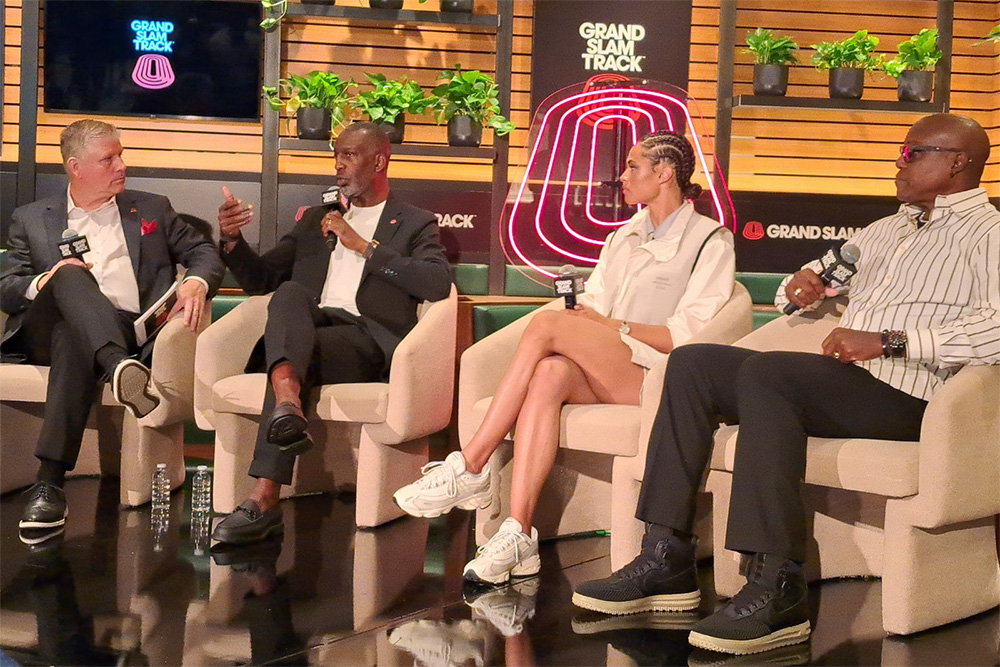
FINALLY, IT HAS A NAME, the new professional league for which sprint great Michael Johnson has been drumming up publicity and investments. Now, with more than $30M in investor commitments locked in, Grand Slam Track has gone public with a press conference in Los Angeles. The league will host four events a year, with the first taking place in April ’25.
Note there is no “& Field” connected to the title — only track events will be held at each 3-day event. Two of the meets will be held in the United States and two internationally, with Los Angeles the only city already identified. The overall emphasis, according to Johnson, will be on storytelling. Inevitably, many of the stories will be driven by what Johnson calls the largest racing purse in history, with $12.6 million in prize money each season.
Athletes will fall into two categories. There will be 48 “GST Racers,” who are committed to competing in all four of the events annually. They will receive an annual salary in addition to whatever prize money they win. They also get a slice of licensing and revenue opportunities, as well as marketing and branding support. Sydney McLaughlin-Levrone has come on board as the first big athlete to sign.
Another group of 48 will be called “GST Challengers” and will earn appearance fees in addition to prize money. Membership in this group is more fluid, and may change from meet-to-meet.
“Ideally,” says Johnson, “it comes down to just who are the fastest athletes in the world and who are the biggest rivals in the world, and making sure that we lean into those stories.”
There are six categories of races: short sprints (100/200), short hurdles (100H or 110H plus 100), long sprints (200/400), long hurdles (400H plus 400), middle distance (800/1500) and long distance (3000/5000). Each athlete will be expected to compete twice in each meet. There are no teams, per se. Athletes will compete in the uniforms of their usual sponsors. Additionally, all marks will be eligible for World Athletics qualification and rankings purposes.
Grand Slam Track will be “dedicated to creating the best head-to-head matchups and rivalries for fans globally,” not winning times. There will be no rabbits or pacing lights.”
Explains Johnson, “People love racing. People want to see the best of the best. And at the core of Grand Slam Track is the best of the best athletes. Only the fastest competing head-to-head against one another 4 times a year, 3-day events over a weekend. Our athletes are grouped 12 groups, 6 female groups, 6 male groups, and grouped by distance, 8 athletes in each one of those groups.”
A key factor in the plan is that fans will see major athletes regularly. Says McLaughlin-Levrone, “Track is so kind of sporadic in how it’s set up, people expect crazy times and crazy performances every time they see us because they don’t see us that often. And I think this will kind of normalize seeing people through training cycles and in different parts of their training, but still seeing the best of the best compete to the point where they’re just enjoying the fact that we get to race one another and seeing a good race as opposed to always expecting something amazing and spectacular, which can happen.”
Says Johnson, “They want to compete against their rivals, but they deserve and should be compensated for that. And that’s what we’re doing.”
The organizers advise, “Ticket sales information will be released in due course. For further information, please follow @GrandSlamTrack on all social media platforms, and visit grandslamtrack.com.”